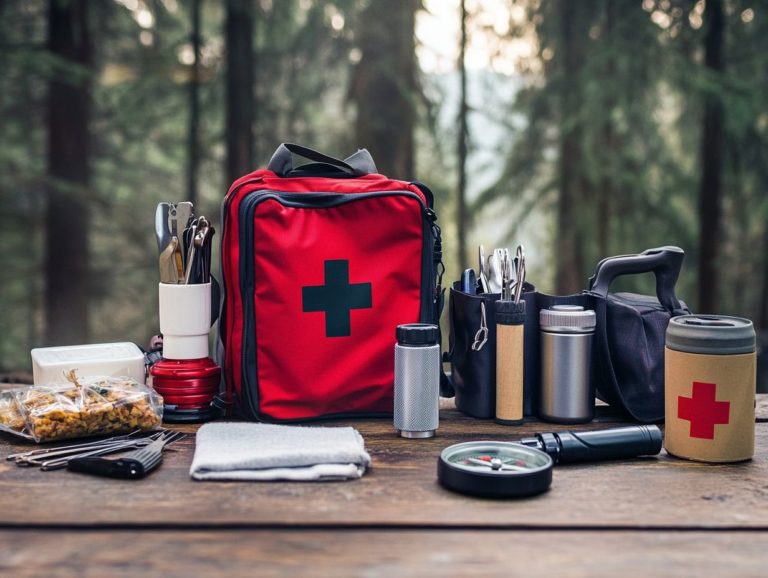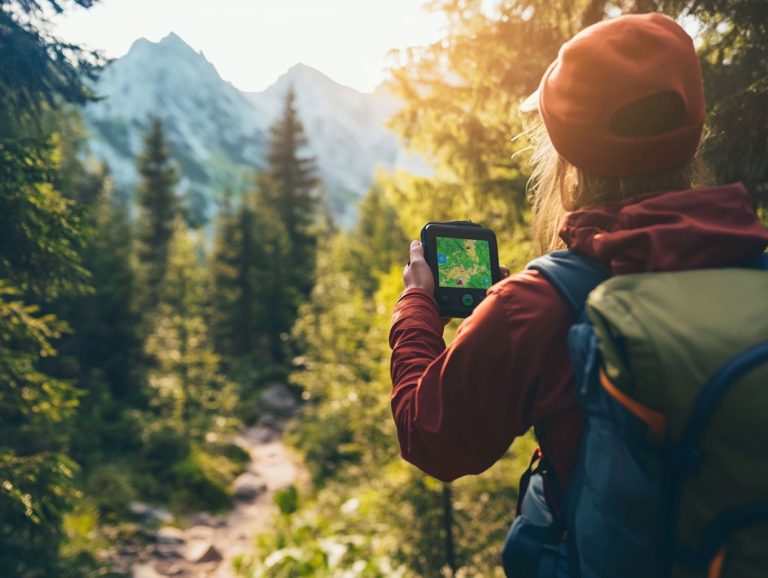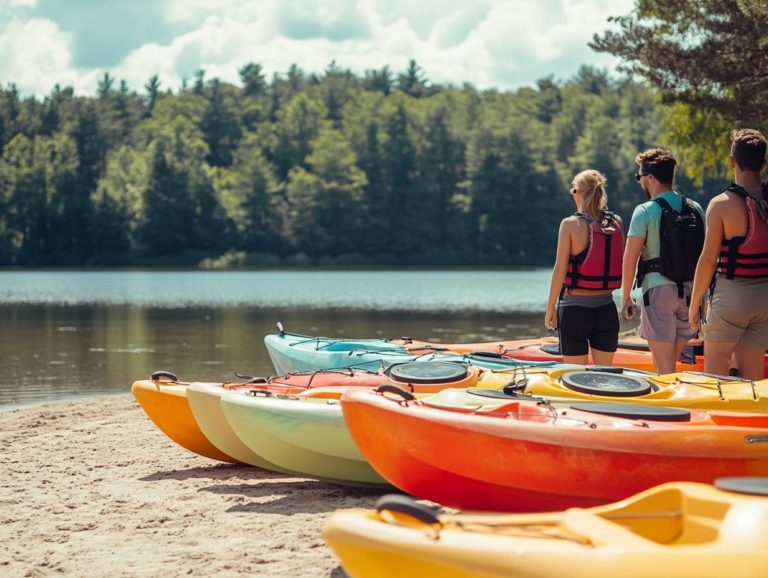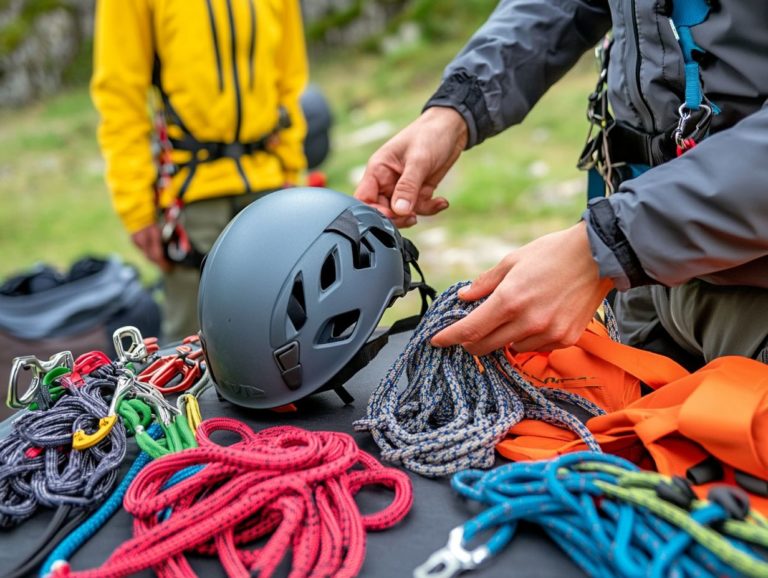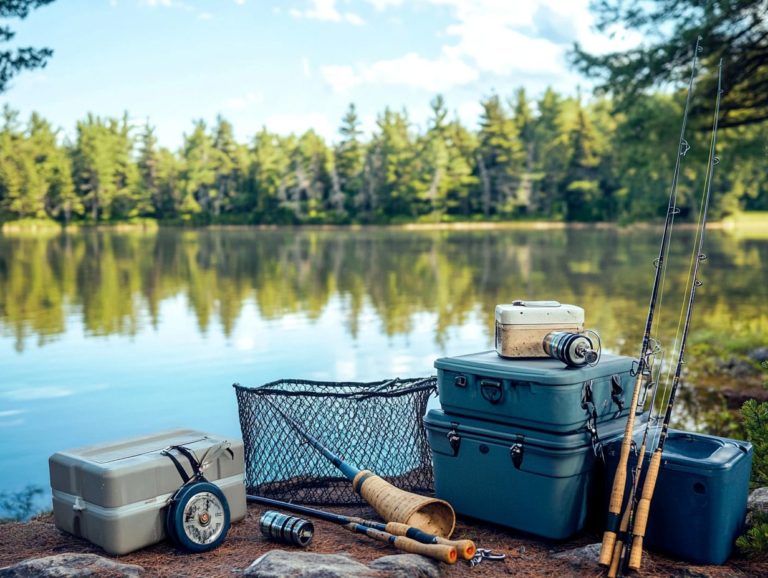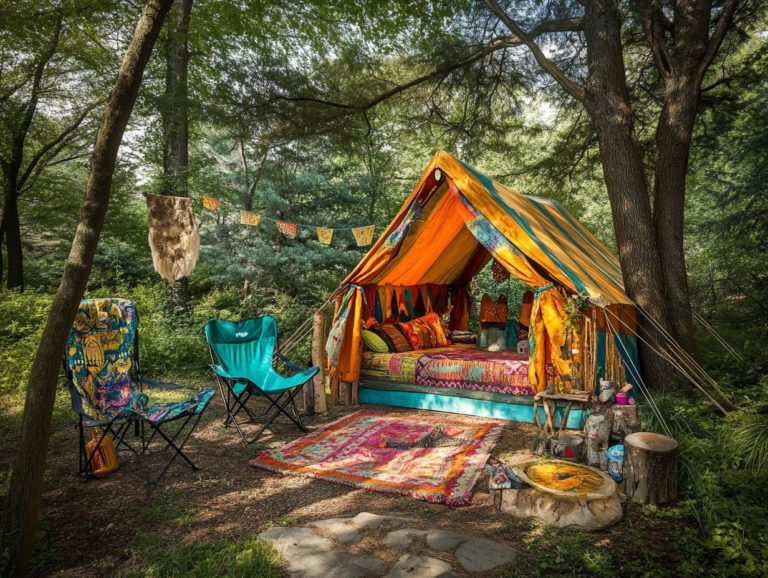What Gear Do You Need for Hiking?
Heading out on a hiking adventure demands more than just a sense of adventure; the right gear is essential for ensuring your experience is both safe and enjoyable.
This article delves into the essential gear every hiker should consider, covering everything from a basic hiking checklist to specific footwear options and clothing recommendations tailored for various weather conditions.
You’ll also explore backpacks, navigational tools, and other crucial equipment that can elevate your hiking experience. Prepare yourself with the insights needed for your next trek!
Contents
Key Takeaways:
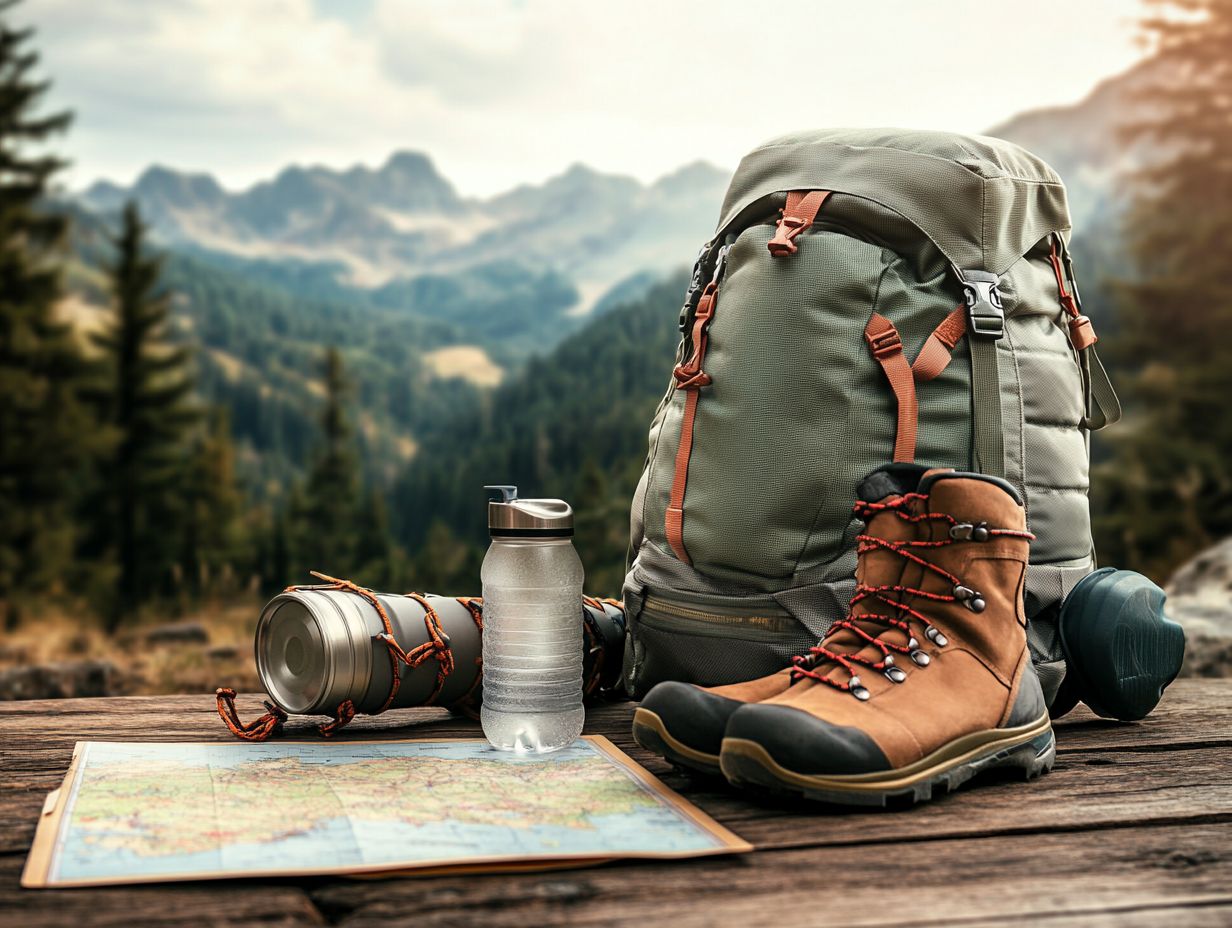
- Get the right gear like hiking shoes, clothing, and a backpack.
- Think about the weather and terrain when choosing your gear.
- Don t forget navigation tools and a first aid kit!
Essential Gear for Hiking
When planning a day hike, it s essential to gather the right gear to ensure an enjoyable and safe experience in the great outdoors, especially in diverse environments like Colorado. You ll want to buy good hiking shoes and clothing from trusted brands such as Patagonia and Salomon.
Having essential hiking equipment is key. Think of a reliable daypack (a small backpack for day hikes) like the Osprey Talon 22 and navigation tools, whether that s a GPS device or a good old-fashioned map.
Before you hit the trails, take a moment to check trail conditions and prepare a comprehensive hiking checklist to make sure you have everything you need. Connecting with the hiking community can also provide valuable advice and recommendations, enhancing your overall adventure.
Basic Hiking Gear Checklist
Creating a basic hiking gear checklist is your ticket to being well-prepared for any day hike. This will significantly reduce the chance of overlooking essential items like your first aid kit, water bottle, food, and personal necessities such as hand sanitizer or insect repellent.
By carefully evaluating the specific conditions of your chosen trail, you can include clothing layers that adjust seamlessly to changing temperatures and weather. It s wise to pack a hydration pack to keep fluids easily accessible throughout your journey, along with nutritious snacks that will sustain your energy and morale on the trail.
Don t forget navigation tools! A reliable map or GPS device is vital for staying oriented. Safety equipment like a whistle, multi-tool, and flashlight can provide peace of mind in case unexpected situations arise.
By ensuring all these items are on your checklist, you ll set yourself up for a more enjoyable and secure hiking experience.
Choosing the Right Hiking Gear
Choosing the right hiking gear requires careful consideration of several factors, including your anticipated hiking duration, the conditions of the trail, and your personal preferences for outdoor clothing and equipment.
By evaluating these elements, you can select the finest products from trusted brands and gear reviews that align perfectly with your unique needs.
Factors to Consider
When selecting your hiking gear, consider several key factors that are essential for your safety and enjoyment in the great outdoors. Think about the weather conditions, trail conditions, and your personal comfort these elements are vital.
For instance, during rainy weather, choosing waterproof stuff sacks can keep your gear dry. A synthetic jacket is ideal for warmth, retaining heat even when wet. If you’re tackling rocky or uneven trails, it’s wise to invest in sturdy hiking boots with excellent ankle support to help prevent injuries. Additionally, don’t overlook layering options; moisture-wicking base layers can significantly enhance your comfort during those strenuous hikes.
Each component of your gear plays a crucial role. Understanding these factors enables you to make informed choices that will contribute to a successful adventure.
Footwear for Hiking
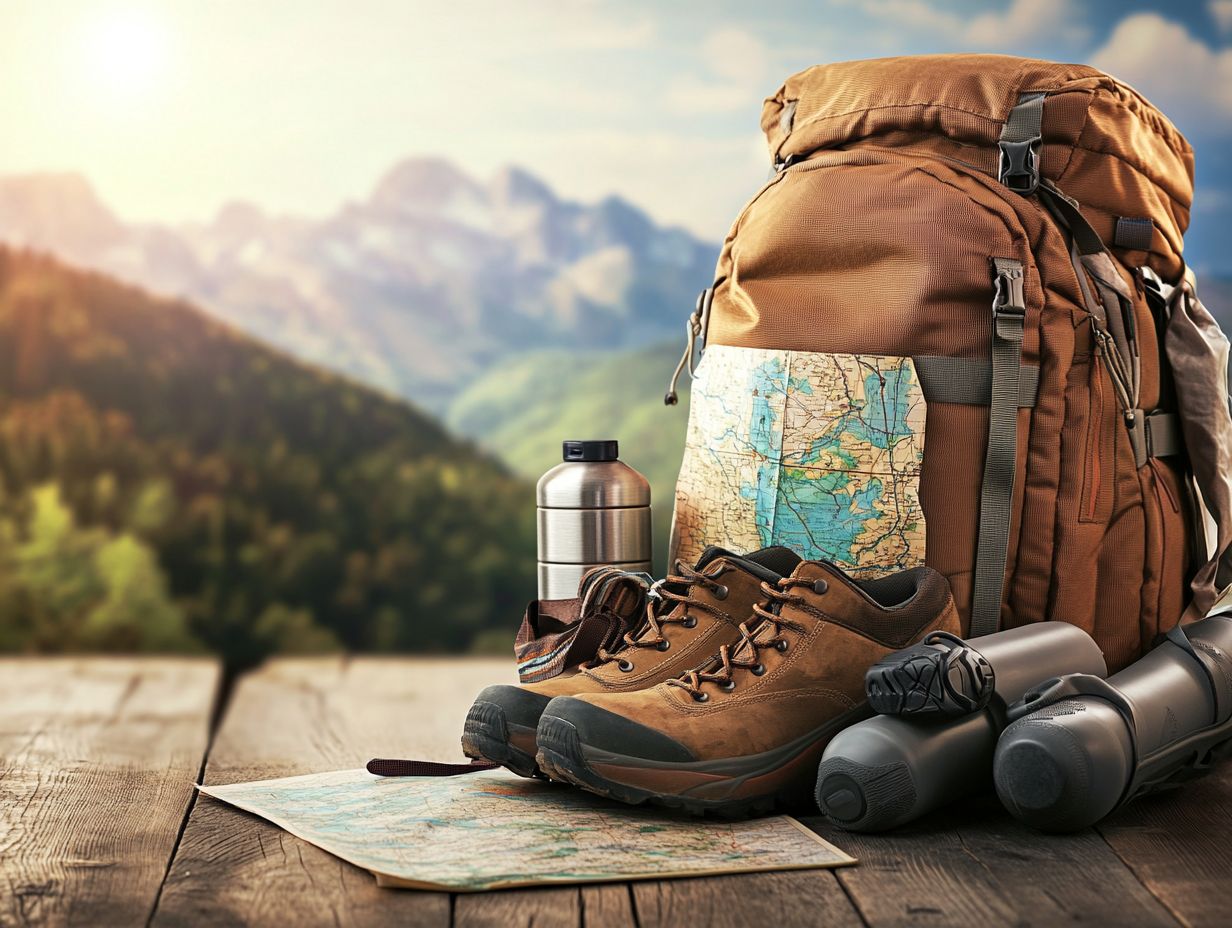
Footwear for hiking is crucial for your comfort and safety on the trails. You can choose from lightweight hiking shoes to sturdy hiking boots.
Brands like Salomon and Darn Tough offer a variety tailored to different trail conditions and personal comfort. Selecting the right footwear can greatly enhance your outdoor experience.
Types of Hiking Shoes and Boots
There are many types of hiking shoes and boots to meet your needs. Lightweight shoes are perfect for day hikes, while sturdy boots are ideal for rugged terrain. Options like the Salomon X Ultra 4 GTX and Darn Tough blend comfort and performance seamlessly.
If you plan to hike in wet conditions, consider waterproof options like the Merrell Moab 3 WP. These can keep your feet dry and protected. For challenging mountainous trails, high-cut boots provide the ankle support and stability needed in rugged environments. Brands like Columbia and Keen also offer excellent models for various climates.
When choosing footwear, consider the trail’s nature and your personal comfort. This will ensure an enjoyable hiking experience, no matter what Mother Nature has in store.
Clothing for Hiking
Master the art of layering when selecting clothing for hiking. This allows you to adapt to shifting weather conditions and ensures your comfort.
Incorporate items like a sun protection shirt and a waterproof rain jacket, along with insulating layers such as down or synthetic jackets. This thoughtful combination keeps you prepared for whatever nature throws your way.
Layering and Weather Considerations
Pay close attention to the weather when layering for hiking. The right layers will keep you comfortable no matter what.
Understand how each layer serves its purpose for enjoyable and safe adventures. The base layer, made from moisture-wicking materials like merino wool or polyester, helps regulate sweat, keeping your skin dry and warm.
Mid layers, like fleece jackets or down vests, offer critical insulation without added bulk. Outer layers like breathable, waterproof shells protect you from wind and rain. This combination enhances thermal regulation and ensures you remain agile to tackle varying trail conditions, showing the importance of choosing the right garments for your outdoor pursuits.
Backpacks and Daypacks
Selecting the perfect backpack or daypack is vital for comfortably carrying your hiking gear. Options like the Osprey Talon 22 include features such as hydration packs, adjustable straps, and ample storage space for your essentials.
Choose a pack that meets your specific needs for a seamless outdoor experience.
Features to Look for
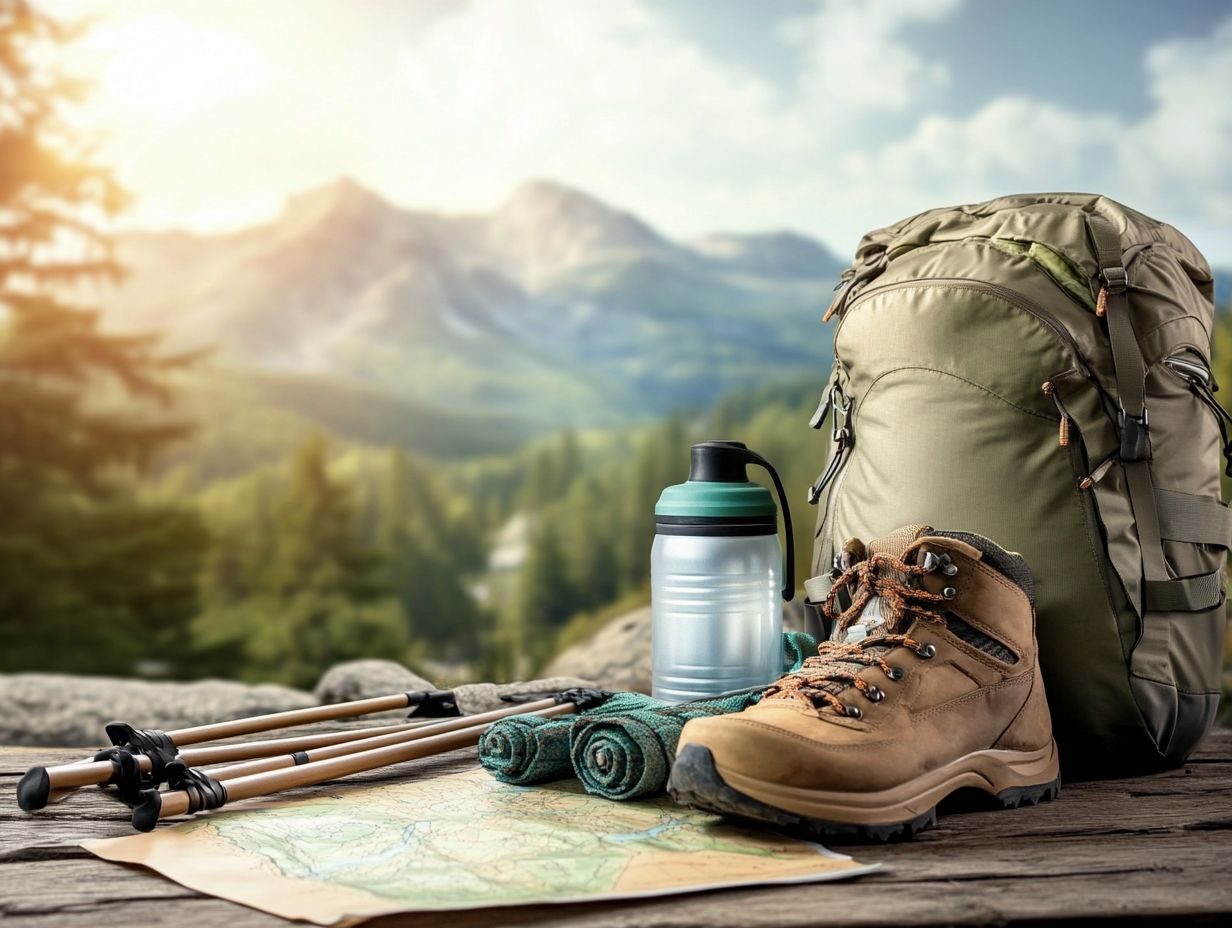
When selecting a daypack, consider features like hydration systems, adjustable straps for optimum comfort, and sufficient storage capacity for gear, food, and personal items necessary for a successful hike. These elements enhance your trek’s efficiency and contribute to overall comfort on the trail.
Look for packs with lumbar support and breathable materials to prevent back fatigue and keep you cool on long journeys. Multiple compartments are essential for organization, allowing easy access to snacks and tools without rummaging through your gear. Padded hip belts are also invaluable, helping to distribute weight evenly so you can hike longer distances without strain.
By utilizing these features, you can elevate your hiking experience from average to extraordinary, fully immersing yourself in the beauty of nature.
Other Important Gear for Hiking
Beyond clothing and footwear, several vital gear items can significantly enhance your safety and enjoyment while hiking.
Consider investing in navigational tools, such as GPS devices (which help you find your way), carrying a well-stocked first aid kit, and using trekking poles for added stability. Essential safety equipment includes bear spray and emergency blankets, providing peace of mind during your adventures. Additionally, knowing what gear is needed for trail running can enhance your experience.
Navigational tools, including GPS devices and a reliable map, paired with a well-stocked first aid kit and sturdy trekking poles, are essential for a safe and enjoyable hiking experience.
These crucial items guide you through unfamiliar terrain and prepare you for unexpected injuries or emergencies. A first aid kit filled with bandages, antiseptic wipes, and any necessary medications allows you to swiftly address minor accidents that could otherwise derail your outing.
Trekking poles provide stability on uneven surfaces, helping to reduce fatigue and minimize the risk of slips and falls. Together, these tools establish a solid foundation for a safe and rewarding hiking experience, enabling you to immerse yourself in the beauty of nature.
Check out this video to learn more about essential hiking gear!
Frequently Asked Questions
What Gear Do You Need for Hiking?
To have a safe and enjoyable hiking experience, you’ll need a few essential pieces of gear. These include proper footwear, a backpack, navigation tools, and protective clothing.
Do I Need Hiking Boots?
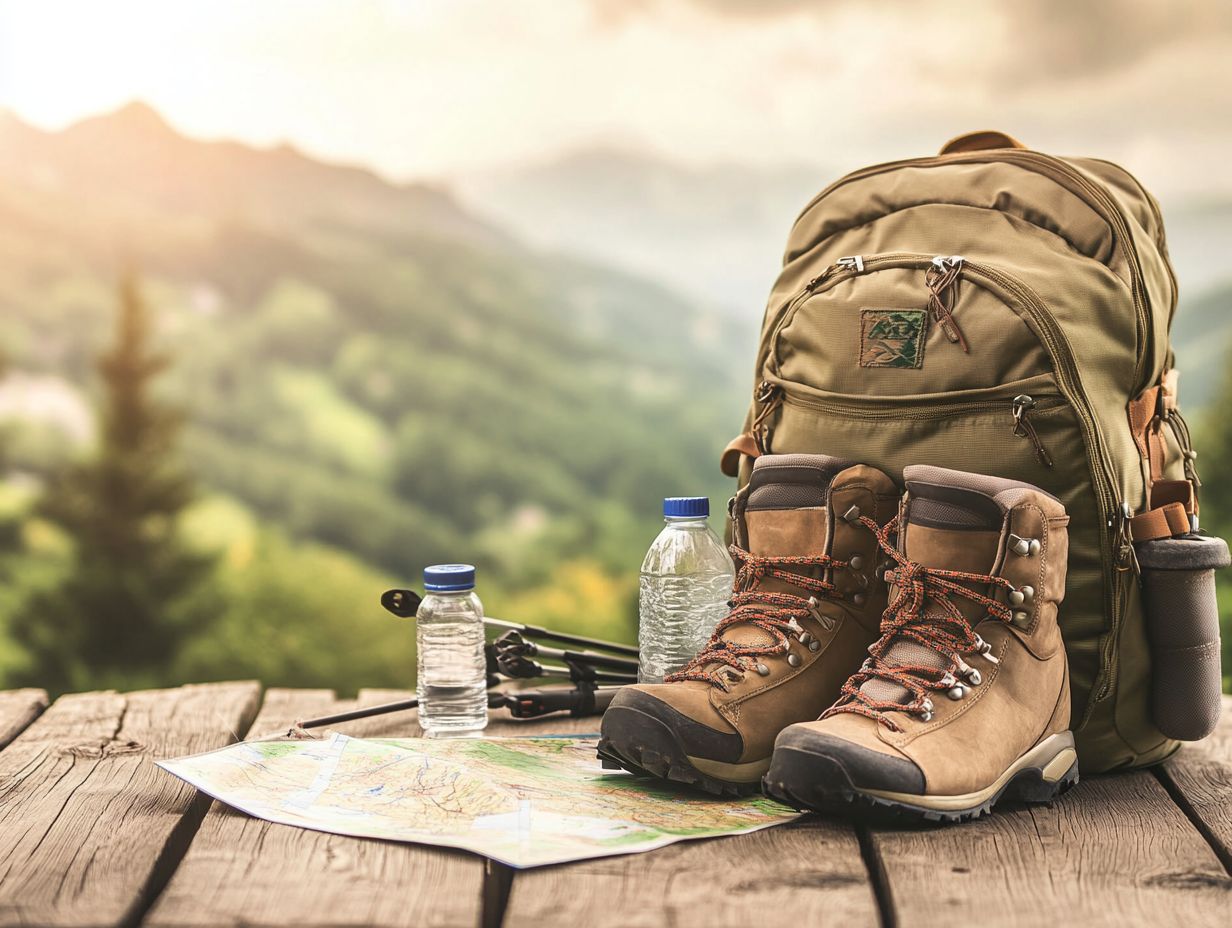
Yes, a sturdy pair of hiking boots is crucial for tackling different terrains and providing support to your feet. Look for boots with good traction, ankle support, and waterproofing.
What Kind of Backpack Should I Bring?
A backpack is essential for carrying all your necessary gear and supplies on a hike. Choose a backpack with adjustable straps, multiple compartments, and durable materials that can withstand the elements.
Navigation tools such as a map, compass, and GPS device are necessary for staying on track during a hike. Familiarize yourself with how to use these tools before setting out on a trail.
What Clothing Should I Wear?
Wearing proper clothing can make all the difference for a comfortable and safe hike. Opt for moisture-wicking and quick-drying materials, such as a Patagonia Capilene Cool Daily Shirt, and layer up for changing weather conditions with a rain jacket or a down jacket.
Is Sun Protection Important?
Yes, sun protection is crucial if you will be exposed to direct sunlight for an extended period. Wear sunscreen, a ball cap, and sunglasses to protect your skin and eyes from harmful UV rays. A sun protection shirt is another excellent option.
Start planning your next hike today!

